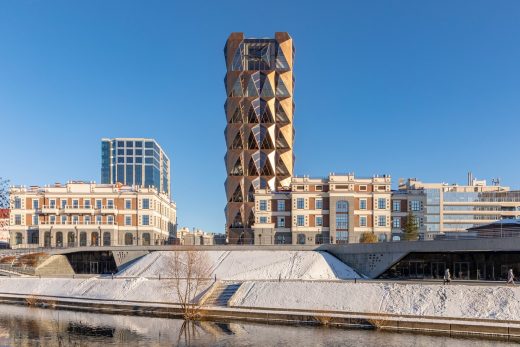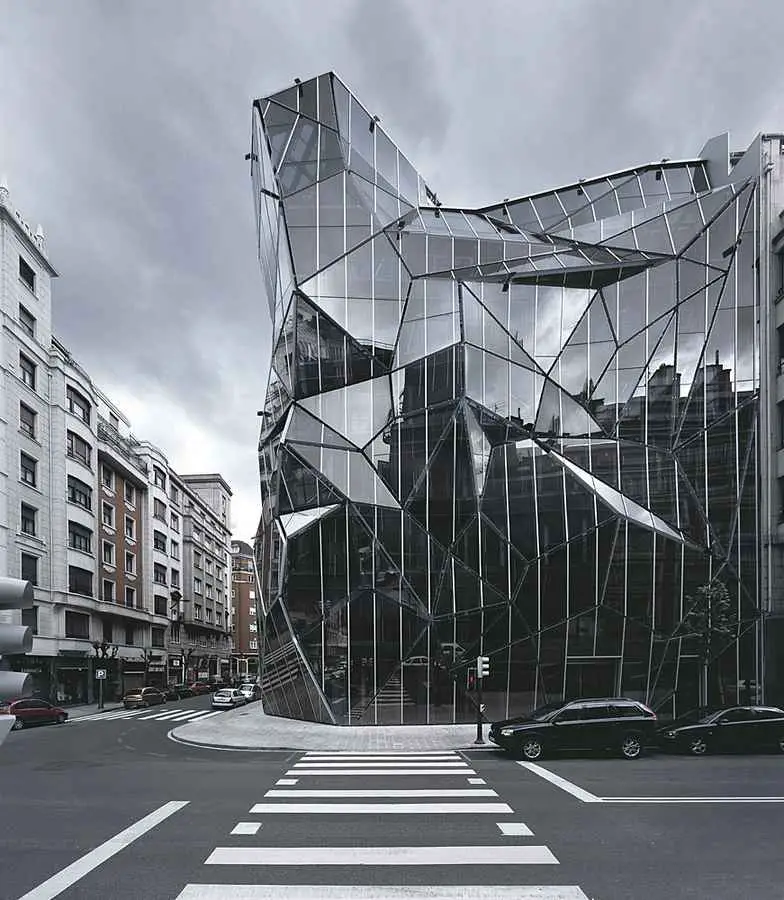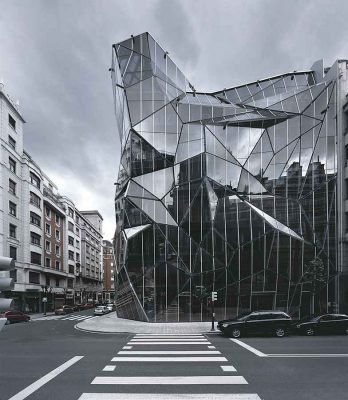Trusted 10 Most Impressive Glass Structures in the World Advice, Modern Makeover Tips, Property Guide
10 Most Impressive Glass Structures in the World
12 Feb 2020
Since the dawn of time, humans have sought to construct edifices for a variety of purposes. While earlier in human history, structures largely served purely utilitarian purposes, the inspiration and variance of architecture expanded. From religious structures to complex workspaces, the need and desire for more nuanced architecture continued to grow.
Impressive Glass Structures Guide
Over the past two hundred years, the flexibility and technological prowess of builders has expanded exponentially, allowing for complicated structures that would have been a dream just five hundred years ago. From steel and concrete to fibreglass and even plastic, construction methods are constantly evolving.
However, it is arguably glass that inspires the hearts and minds of architects, engineers and the general public the most. With that in mind, let’s examine 10 of the world’s most impressive structures that feature glass prominently in their designs. Follow more glass related topic on Third Eye Blog.
Basque Health Department Headquarters
Tucked in the city centre of Bilbao, the Basque Health Department Headquarters is a difficult structure to miss. This building – comprised of polyhedrons that bulge out in a variety of directions – maintains a smooth yet modern style while still managing to be provocative.
The design is inspired by Coll-Barreu Architects, with its shape designed to facilitate the entry of light from multiple angles in order to brighten up the rooms within the structure. Designed as an office building, the Basque Health Department Headquarters services the local community while still managing to be one of the most popular tourist attractions in this region of Spain.
Louvre Pyramid
Arguably one of the most recognised glass structures in the world, the Louvre Pyramid serves both a functional and aesthetic purpose. Serving as the primary entrance to the Louvre itself, the pyramid was originally built roughly 30 years ago (1989) by I. M. Pei.
While originally considered somewhat of a blight due to its modernist design contrasting with that of Paris’ more classical architecture, the structure has since become known as a mainstay of the city and a wonderful addition that millions visit each year. Measuring approximately 22 metres tall, the pyramid is actually surrounded by three other, smaller pyramids that frame the glass structure in the centre of the courtyard.
W Barcelona Hotel
Spain is no stranger on this list of impressive glass structures, and another structure – the W Barcelona Hotel – features prominently in the city’s skyline. Designed by Ricardo Bofill and constructed in 2009, the 100-metre glass structure combines smooth and elegant elements with contrasting protrusions to create a unique structural ambiance.
One of the more alluring attractions of the W Barcelona Hotel are its glass verandas protruding over the Port of Barcelona. Structures such as these have inspired companies like Nationwide Home Innovations to offer verandas and premium glass roof patio structures for both home owners and commercial properties. Such verandas provide an outdoor living experience for the masses – those who are interested in enhancing their own properties can visit nationwideltd.co.uk for more information.
National Grand Theatre of China
The building that became known by media outlets as “The Giant Egg” in recent years is without a doubt one of the most impressive glass structures on the planet. Constructed in advance of the 2008 Beijing Olympics, the National Grant Theatre of China boasts more than 200,000 square metres of floor space, and rises to 46 metres at its tallest point.
Designed to serve as an art centre and an opera house, the architect (Paul Andreu) sought to utilise glass above all other materials in its construction. The structure is surrounded completely by an artificial lake, which creates a beautiful cascade of reflections at night.
30 St Mary Axe
One of the most prominent commercial skyscrapers in London, 30 St Mary Axe (also known as “The Gherkin”) has framed the skyline of the city since 2003. Embodying contemporary architecture, The Gherkin utilises a variety of thick glass panels that visually curve upward, fusing at the top to create a smooth, organic-looking structure. However, there is only one piece of curved glass on the entire building (the curved section at the top).
There are numerous interesting facts about the Gherkin. One such example is that the design of the building has been noted as highly efficient, making the most of natural light and climate (the building is reported to use only half the energy of a structure of comparable size). Designed by Skanska, the 41-floor structure is one of the most admired contemporary architectural accomplishments of the 21st century.
Guggenheim Museum Bilbao
The third entry on this list from Spain – and the second from the city of Bilbao – is the Guggenheim Museum. Built in 1997 and serving as a museum for contemporary art, the architects who built this glass structure unleashed creativity to incorporate a variety of unique shapes, waves and textures in glass form to create a one-of-a-kind masterpiece.
Frank Gehry sought to design a daring structure with the Guggenheim Museum’s construction, noting that its curves are designed to catch and filter light, while the interior is designed in such a way to allow for optimal views of both the city and countryside.
Kanagawa Institute of Technology Workshop
Japanese architecture is no stranger to minimalist design – and that often incorporates the use of clean, transparent elements such as glass. The Kanagawa Institute of Technology Workshop doesn’t get simpler than that; fully transparent walls both on its exterior and interior create the sense of open space even with segmented areas, which lets the students who occupy this space function optimally via the infiltration of natural light.
Designed by Junya Ishigami, the floor-to-ceiling glass promotes a feeling of working outdoors without being subjected to the elements. The use of glass in this impressive structure essentially creates the feeling of openness while still respecting the boundaries of those who dream and create within its walls.
Netherlands Institute for Sound and Vision
Constructed by world-renowned architects Willem Jan Neutelings and Michael Riedijk, the Netherlands Institute for Sound and Vision is a remarkably simple yet powerful example of glass architecture. Built in the shape of a gigantic rectangular cube, the structure’s glass exterior is stained with a choropleth of sorts, which illuminate vividly at night (some describe the colours as resembling a variety of national flags).
Built in 1997, the structure serves as an archive for national broadcasting groups, as well as a cultural heritage site and a museum.
Aldar Headquarters
Thanks to the United Arab Emirates building boom, the country has brought the world a variety of unique structures in recent years. Therefore, it shouldn’t be surprising that one of the most impressive glass structures in the world originates from this country – the Aldar Headquarters. Compared at times to a coin standing upright, the structure utilises the principles of the golden ratio in its construction.
With more than 60,000 square metres of floor space, the upright nature of the building (at 110 metres tall) funnels most space upwards rather than outwards. Using a steel diagrid, the exterior of the facility is covered in glass panels that reinforce the beauty the architects and designers sought to accomplish in its construction.
Sage Gateshead
Last but not least, another marvellous glass structure in England – the Sage Gateshead – serves as a musical education centre and opened in 2004. Consisting of three conjoined dome-like sections, the bulbous nature of the structure adds an organic feel to the edifice.
Designed by Foster and Partners, the Sage Gateshead has won numerous awards for its stunning beauty and seamless integration into the surrounding natural ecosystem. Fitted to a steel shell, the curved glass sections that comprise the structure help funnel in natural light and make each space more illuminated than in most traditionally-constructed buildings.
Ultimately, the sheer number of glass-centric structures around the world are too many to count, but these 10 are focal points in their communities and serve as prime examples of what contemporary architecture and design can do alongside the use of glass in the right circumstances.
Comments on this guide to 10 Most Impressive Glass Structures in the World article are welcome.
Building Articles
Basque Health Department Headquarters
Design: Foster + Partner

photo courtesy of architects
RCC Headquarters Yekaterinburg
Comments / photos for the 10 Most Impressive Glass Structures in the World page welcome






